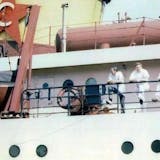It's been about 20 years since I bought my first trail camera, and I still have fun using it.
At the time, my plan was to monitor animal activity on acreage I own near Brainerd for hunting and photography purposes. I also hoped to assess the success of my habitat management projects. Trail cams allowed me to monitor tree planting, wetland restoration, wildlife food plots and mineral licks.
I continue to use trail cameras for monitoring my acreage, and I continue to look forward to reviewing the images. I never know what creatures might have passed since last I looked.
Trail cameras are especially popular with deer hunters. Hunters use the cameras to monitor activity at deer trails, rubs, scrapes and more. The cameras can reveal important information about numbers of deer, their size, buck-to-doe ratios, and when they're on the move.
A trail camera is a weatherproof unit consisting of a digital camera. The cameras are triggered by an infrared heat-in-motion detector. Simply put, the camera's shutter is tripped when any warm object in motion is detected. Rain, snow and falling leaves or branches should not trigger the unit. The camera's functions are automatic, so focus and exposure are fully controlled. On most units, a flash is activated in lowlight conditions and at night. Plus the images are time-stamped. Some units even display the current temperature, barometric pressure and moon phase.
Expect a slight delay between the time an animal trips the trigger and when the image is actually taken. Some cameras feature a delay of less than a second. Look for a quick trigger speed to ensure best results.
Over the years I've tried numerous brands, and had a complaint or two about most. Delayed firing is a common problem. So are false images produced when sunbeams trigger a shot.
The best advice I can offer is make sure you can get a refund if you aren't pleased. Also, test the functions of your new unit at home before placing it in the field. I suggest a thorough reading of instructions before placing the camera on a tree. Try walking past the unit at varying angles, distances and speeds during both daylight and darkness.


